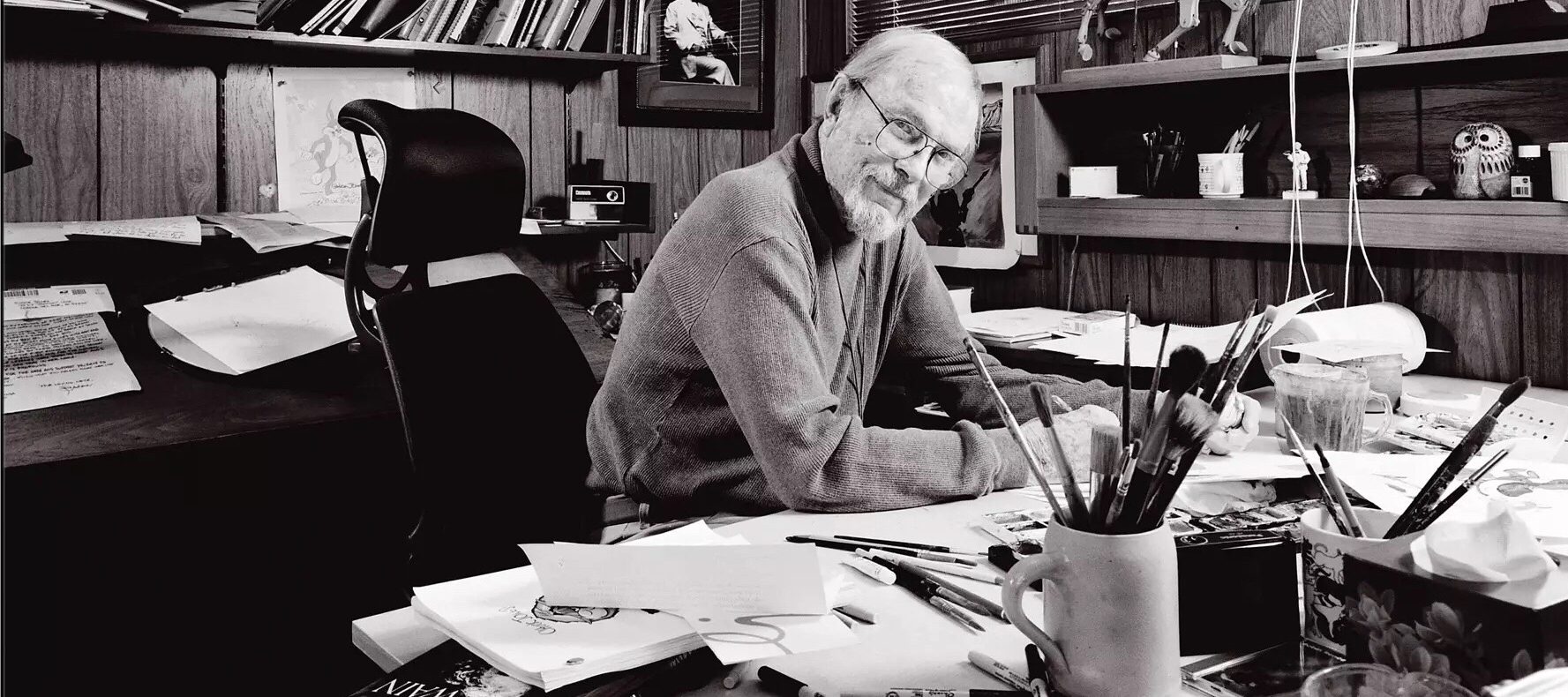10 Greatest Chuck Jones Short Films

Chuck Jones may arguably be the most influential, if not, the greatest artist in American Animation. Today marks, what would be, Jones’ 104th birthday and we have been without The Father of Contemporary Animation for 14 years, his films will likely remain for many, many years. So today let us run down the cream of the cream of the crop. The Best of the best of the best. The crème de la crème de la crème. For when Jones made a film it was above most others, yet when he made a masterpiece (and he made many) it stood towering above the lot. Though it is hard to separate some of the greatest works in all of animation, we’re going to try. Though it’s hard to rank lists like this, assume that we are going from most masterful to the mostest of masterful. Yet before even that, here are some other wonderful shorts by the master to check out!
9. Fast and the Furry-ous (1949)

8. Long-Haired Hare (1949)

7. Feed the Kitty (1952)



Before there was the awful spinoff TV show, there was the original masterpiece of Duck Dodgers in the 24 1⁄ 2 Century. If anything it could be called the first truly great science fiction comedy and like great science fiction, Jones uses the future to talk about the present. Daffy is Duck Dodgers in the century between 24 and 25, and seeks out Planet X to claim it but runs into Marvin the Martin who wants to take the planet for Mars. What follows is Dodgers’ attempts to defeat Marvin, and completely failing to do so without the help of Porky as his First Cadet. The not so subtle parallels of Daffy to the US and Marvin to the Soviet Union are quite clear. Dodgers uses ACME products, of which result in some of Jones’ greatest gags. Including Marvin suddenly shooting Daffy from inside a spy monitor. Eventually it culminates with both sides using their super weapons which ultimately obliterates the Planet. Jones’ statement, that this conflict eventually destroys the goal, doesn’t get through to Daffy “America” Duck, who pushes Marvin off of the last inch of Planet X remaining.
4. The Hunting Trilogy (1951), (1952), (1953)

““SHOOT ME AGAIN! I ENJOY IT! I LOVE THE SMELL OF BURNT FEATHERS AND GUN POWDER AND CORDITE! I’M AN ELK! SHOOT ME! GO ON! IT’S ELK SEASON! I’M A FIDLER CRAB! WHY DIDN’T YOU SHOOT ME!?!? IT’S FIDLER CRAB SEASON!!!!!!!!””
Pure comedy gold.
3. What’s Opera, Doc? (1957)

Placing Jones’ magnum opus at number three on this list may sound shocking. Even for the master there are times when you can see the cracks within the gold, after all, Jones was shoving one of the single greatest composer’s works into a seven minute cartoon. Also, then again, what a glorious seven minute cartoon it is, and one that defied everyone’s expectations of short form animation back in its release. The film required a great extra amount of work from Jones and his animators. They spent more time on this short than perhaps any other, and the result is one of grandiose and sentimentality. The placement of Bugs and Elmer in the original roles is hilarious yet, remarkably, never sells Wagner’s original piece short. It’s handled with the grace and boldness of a master. The way Jones brings classical music to contemporary animation is breathtaking, aweinspiring, and ambitious to a fault. It certainly aspires to be the best, an admirable thing, but there are two other of Jones’ works that might even outdo it.
2. One Froggy Evening (1955)

1. Duck Amuck (1953)

The Scarlet Pumpernickel, The Dover Boys, For Scentimental Reasons, Haredevil Hare, The Ducksters, Robin Hood Daffy, Case of the Missing Hare
